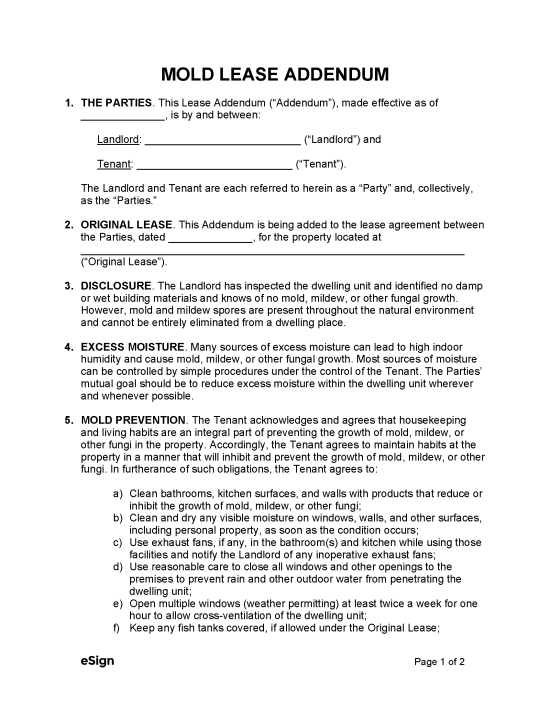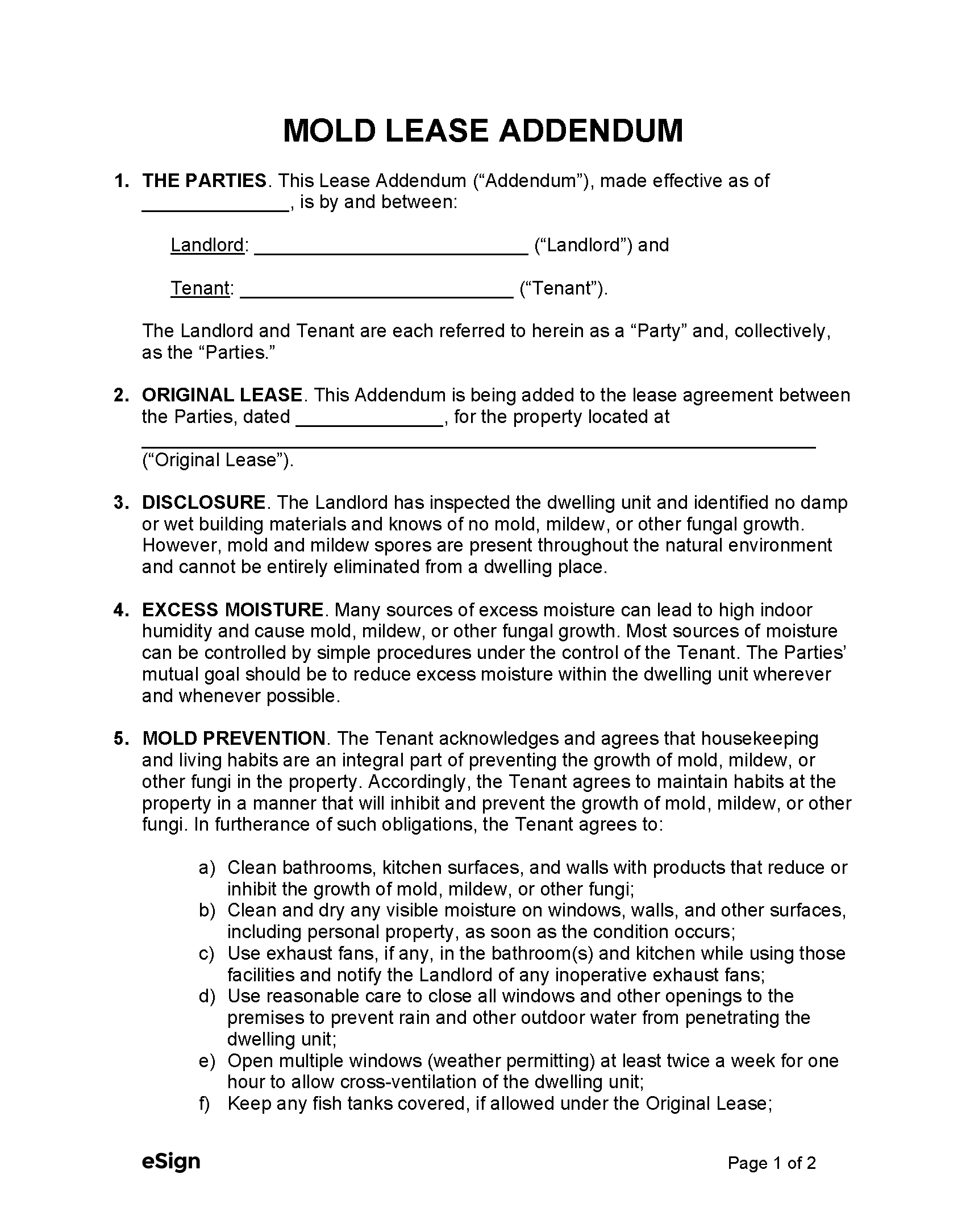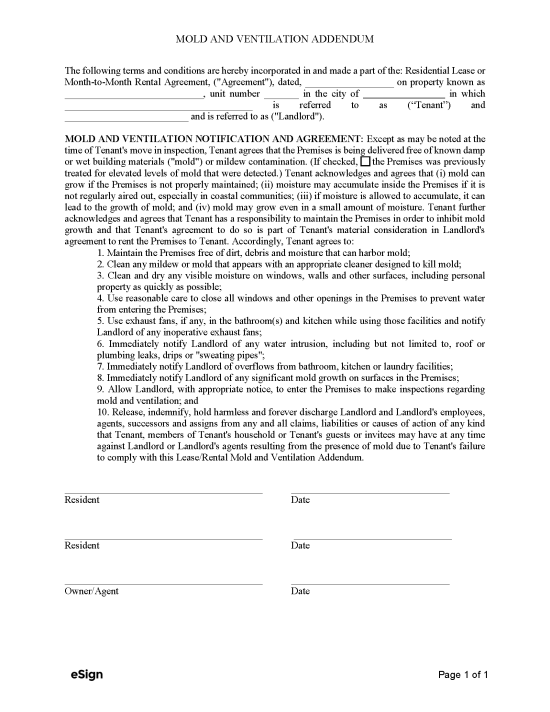By Type (2)
Standard Mold Lease Addendum – Outlines the tenant’s obligations to keep the rental property free from mold infestations.
Download: PDF, Word (.docx), OpenDocument
Mold and Ventilation Addendum – Informs tenants of the property’s history of mold and provides cleaning and ventilation instructions to reduce mold growth.
Download: PDF
Sample
Download: PDF, Word (.docx), OpenDocument
1. THE PARTIES. This Lease Addendum (“Addendum”), made effective as of [MM/DD/YYYY], is by and between:
Landlord: [LANDLORD NAME] (“Landlord”) and
Tenant: [TENANT NAME] (“Tenant”).
The Landlord and Tenant are each referred to herein as a “Party” and, collectively, as the “Parties.”
2. ORIGINAL LEASE. This Addendum is being added to the lease agreement between the Parties, dated on [MM/DD/YYYY], for the property located at [RENTAL PROPERTY ADDRESS] (“Original Lease”).
3. DISCLOSURE. The Landlord has inspected the dwelling unit and identified no damp or wet building materials and knows of no mold, mildew, or other fungal growth. However, mold and mildew spores are present throughout the natural environment and cannot be entirely eliminated from a dwelling place.
4. MOLD PREVENTION. The Tenant agrees to maintain habits at the property in a manner that will inhibit and prevent the growth of mold, mildew, or other fungi. In furtherance of such obligations, the Tenant agrees to: [DESCRIBE PRECAUTIONS TO PREVENT MOLD].
5. NOTIFICATION. The Tenant agrees to notify the Landlord of any excess moisture, water leakage, mold, mildew, or fungi inside the dwelling unit that cannot be removed or controlled by the Tenant.
6. INDEMNIFICATION. The Tenant agrees to release, indemnify, hold harmless, and forever discharge the Landlord and the Landlord’s employees, agents, successors and assigns from any and all claims, liabilities, or causes of action of any kind resulting from the presence of mold due to the Tenant’s failure to comply with this Addendum.
7. EXECUTION. This Addendum may be executed in counterparts, each of which shall be deemed an original, but all of which together shall constitute one and the same instrument.
Landlord Signature: ___________________ Date: [MM/DD/YYYY]
Print Name: [LANDLORD NAME]
Tenant Signature: ___________________ Date: [MM/DD/YYYY]
Print Name: [TENANT NAME]


